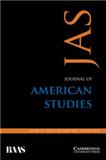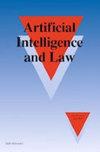Artificial Intelligence And Law杂志是一本国际优秀期刊,是一本未开放获取期刊。该杂志近三年影响因子分别为:2023年3.1、2022年4.1、2021年2.723。该杂志近三年CiteScore评价分区分别为:2023年9.5区、2022年8.7区、2021年6.9区。该刊专门致力于推进LAW领域的研究,涵盖了LAW领域的各个方面,汇集所有专家,促进LAW领域的更好协作和信息共享。该期刊为LAW领域的科研人员提供了一个高影响力的论坛,使该领域的科研人员、从业人员和学生能够接触到尖端的经验性调查分析、学术对话以及行业科研成果的最新发展。通过收录高质量的原创论文和评论论文,促进LAW领域的应用与发展。该期刊还将该领域的创新与应用,以提高研究的质量和实用性。近年来在该刊上发文的国家和地区主要有:Wales(发文量2)、Vietnam(发文量1)、USA(发文量20)、UNITED ARAB EMIRATES(发文量1)、Switzerland(发文量2)、Spain(发文量2)。
Artificial Intelligence And Law是一本由SPRINGER出版社发行的知名LAW期刊。该杂志社联系方式VAN GODEWIJCKSTRAAT 30, DORDRECHT, NETHERLANDS, 3311 GZ。审稿过程是确保期刊质量的关键环节。Artificial Intelligence And Law杂志的审稿速度平均需要 。这一时间周期既体现了编辑部对稿件质量的严格把关,也反映了审稿专家对学术研究的尊重和支持。在这个过程中,作者们可以充分利用这段时间对自己的研究成果进行完善和优化,以提高论文的质量和影响力。如果您对该期刊感兴趣,并希望了解更多关于投稿流程、投稿要求和技巧的信息,您可以咨询本站的客服老师,我们将帮助您了解期刊的投稿要求、审稿流程以及可能遇到的问题,并根据您的具体情况提供相应的建议和解决方案。
| CiteScore | SJR | SNIP | CiteScore排名 | |||
|---|---|---|---|---|---|---|
| 9.5 | 1.501 | 3.467 | 学科类别 | 分区 | 排名 | 百分位 |
|
大类:大类:SocialSciences
小类:小类:Law
|
Q1 | 16/1025 | 98 | |||
|
大类:大类:SocialSciences
小类:小类:ArtificialIntelligence
|
Q1 | 70/350 | 80 | |||
| 按JIF指标学科分区 | 收录子集 | 分区 | 排名 | 百分位 |
|---|---|---|---|---|
| 学科:COMPUTER SCIENCE, ARTIFICIAL INTELLIGENCE | SCIE | Q2 | 86 / 197 | 56.6 |
| 学科:COMPUTER SCIENCE, INTERDISCIPLINARY APPLICATIONS | SCIE | Q2 | 65 / 169 | 61.8 |
| 学科:LAW | SSCI | Q1 | 8 / 421 | 98.2 |
| 按JCI指标学科分区 | 收录子集 | 分区 | 排名 | 百分位 |
|---|---|---|---|---|
| 学科:COMPUTER SCIENCE, ARTIFICIAL INTELLIGENCE | SCIE | Q1 | 24 / 198 | 88.13 |
| 学科:COMPUTER SCIENCE, INTERDISCIPLINARY APPLICATIONS | SCIE | Q1 | 20 / 169 | 88.46 |
| 学科:LAW | SSCI | Q1 | 48 / 421 | 88.72 |
文章名称
引用次数
On legal contracts, imperative and declarative smart contracts, and blockchain systems
13
The boundaries of legal personhood: how spontaneous intelligence can problematise differences between humans, artificial intelligence, companies and animals
10
CLAUDETTE: an automated detector of potentially unfair clauses in online terms of service
7
Reasoning with dimensions and magnitudes
4
Bending the law: geometric tools for quantifying influence in the multinetwork of legal opinions
4
Representing dimensions within the reason model of precedent
4
Deep learning in law: early adaptation and legal word embeddings trained on large corpora
4
Recurrent neural network-based models for recognizing requisite and effectuation parts in legal texts
3
Modelling competing legal arguments using Bayesian model comparison and averaging
3
Semantic types of legal norms in German laws: classification and analysis using local linear explanations
2
国家/地区
发文量
TUSA
20
TItaly
14
TNetherlands
8
TEngland
7
TFrance
6
TAustralia
5
TLuxembourg
5
TBelgium
4
TJapan
4
TPoland
4















